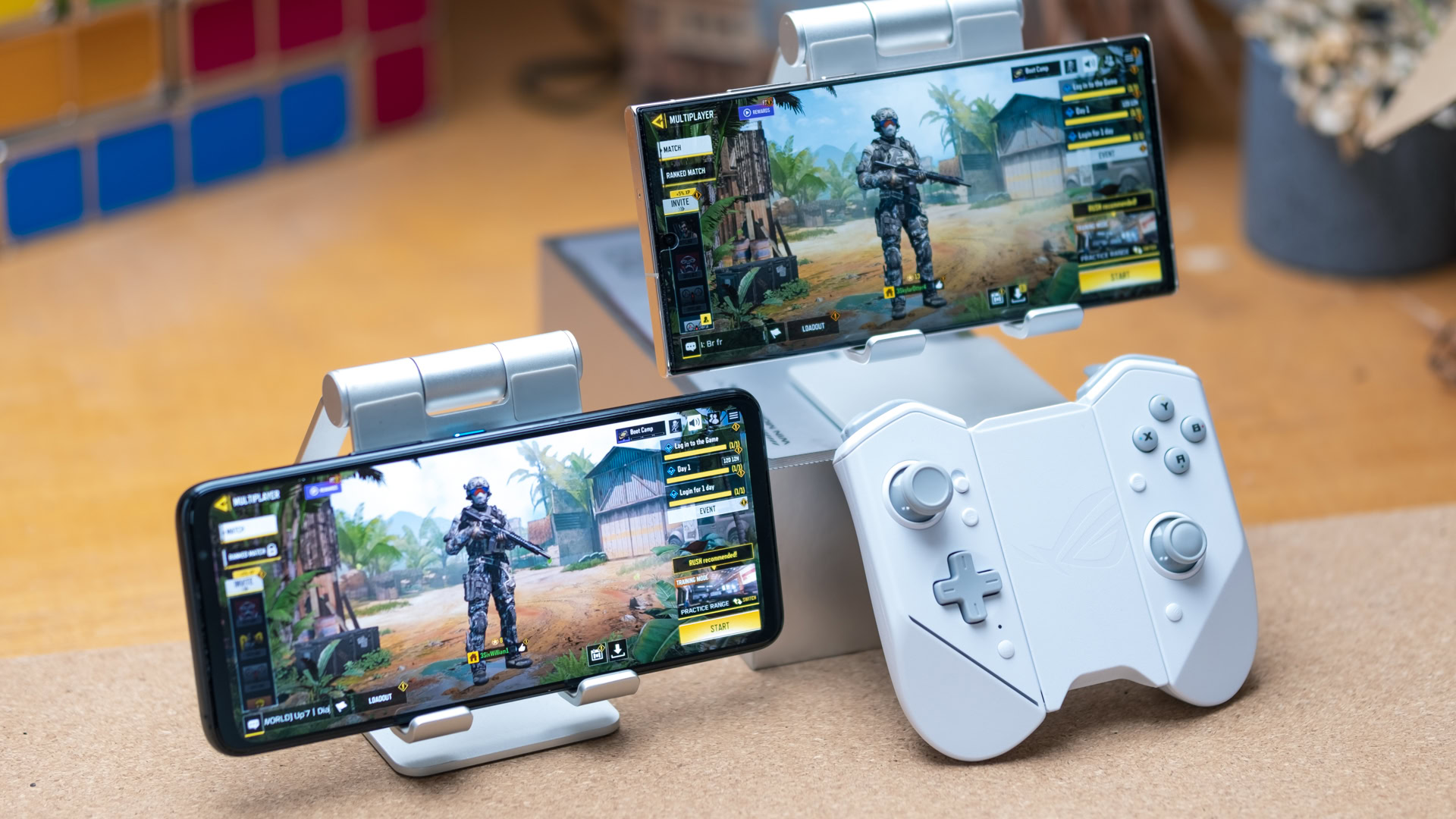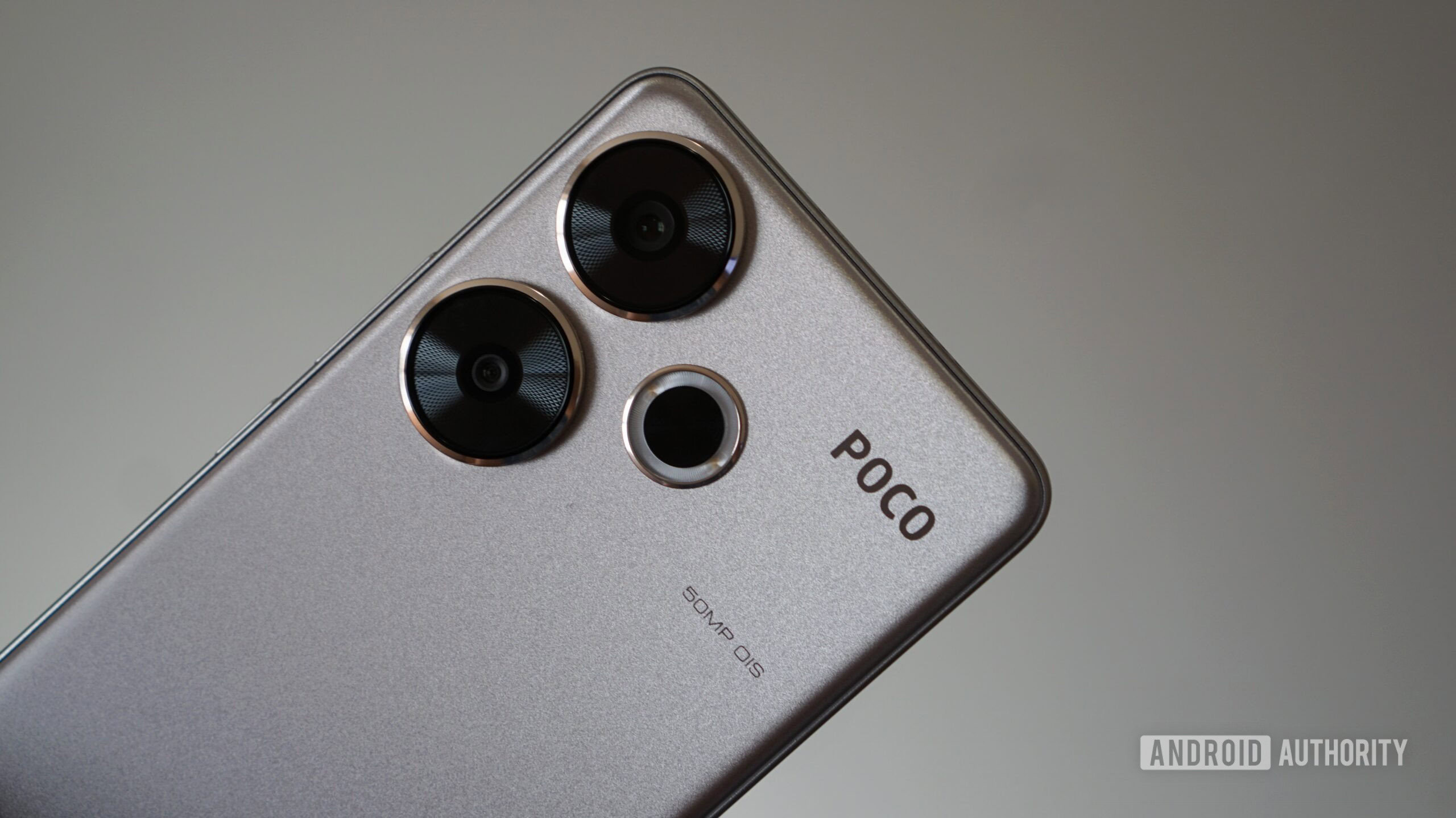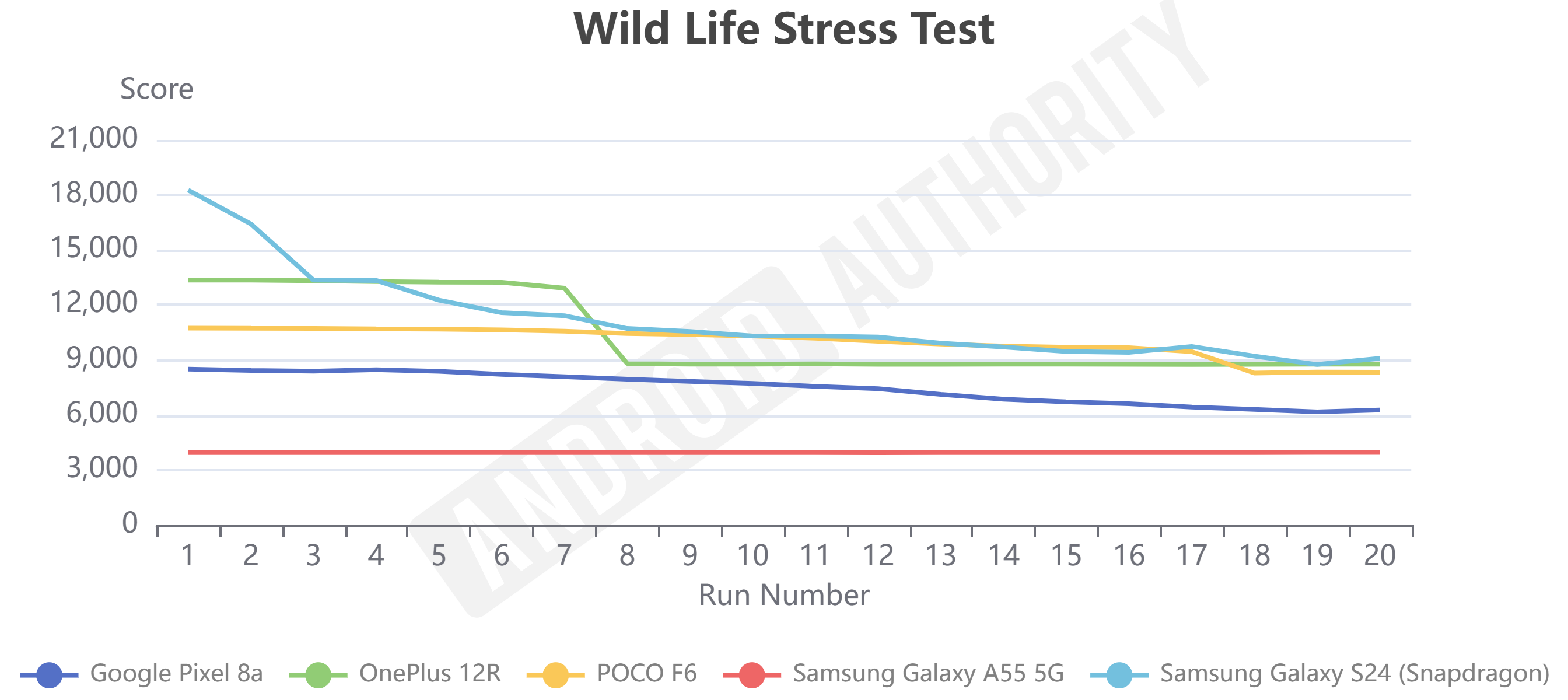Affiliate links on Android Authority may earn us a commission. Learn more.
The best mid-range phone for gaming doesn't come from Google, Samsung, or OnePlus
June 2, 2024

There are plenty of powerhouse gaming phones on the market, but their biggest fault is that they’re often very expensive. Playing the latest games with the graphics cranked up while running the smoothest frame rates hasn’t really been possible on a budget in previous years, but that’s all changing in 2024.
We’ve already clocked the Google Pixel 8a as a powerful yet affordable mid-range option — it features the same Tensor G3 chip as the top-tier Pro model. There’s also the mighty impressive OnePlus 12R, backed by last year’s flagship-grade Snapdragon 8 Gen 2 that delivers silky smooth performance for a fraction of a 2024 flagship pricetag.
Those are fine options, but we recently got our hands on the Poco F6 and the Qualcomm Snapdragon 8S Gen 3 chip inside — a derivative of the flagship-tier Snapdragon 8 Gen 3 that powers premium gaming phones like the ASUS ROG Phone 8. Priced at just $379, this handset certainly sounds like a game-changer for players on a budget.
We’ve already explored the Snapdragon 8 Gen 3 versus Snapdragon 8s Gen 3 in depth. The key point that’ll make the biggest performance difference is that the 8s Gen 3 is based on the Snapdragon 8 Gen 2’s 2022 GPU, complete with ray tracing and some other small changes. The 8 Gen 2 was a solid gaming chip, standing the 8S Gen 3 (and the Poco F6) in great stead as a mid-range gaming powerhouse. Let’s see if the numbers hold up.
Snapdragon 8S Gen 3 benchmarks

For today’s benchmark comparison, we’ve grabbed results from the Poco F6 (8S Gen 3), Galaxy S24 (8 Gen 3), OnePlus 12R (8 Gen 2), Pixel 8a (Tensor G3), and Galaxy A55 (Exynos 1480).
Let’s start with a look at CPU benchmarks. In GeekBench 6, the powerhouse Arm Cortex-X4 big core inside the 8S Gen 3 is right on the heels of the same core found in the top-tier 8 Gen 3. Albeit just slightly behind, owing to a 100MHz clock speed reduction. The 8S also drops one middle core from the 8 Gen 3 CPU setup, which sees its multi-core performance score fall a bit further behind the Galaxy S24 we tested. But it’s really not a big discrepancy, given the huge price difference.
Importantly, the 8S Gen 3’s CPU setup outpaces other smartphones closer to the Poco F6’s price bracket. It blazes past the new Samsung Galaxy A55 and its Exynos 1480 chipset while keeping a solid pace ahead of the more expensive Google Pixel 8a as well. The OnePlus 12R sneaks ahead in multi-core workloads, but the two are quite close.
PCMark’s various real-world workloads, such as document parsing and image editing, reflect these results. Clearly, the Snapdragon 8S Gen 3 inside the Poco F6 offers flagship-tier performance for daily workloads at a fraction of the price. Right, onto gaming.
It’s no surprise that Qualcomm’s best-in-class Snapdragon 8 Gen 3 tops our 3DMark results (stress tests being useful to judge sustained frame rates over marathon gaming sessions). However, sustained performance is an issue for this chip unless brands push the power and heat envelope, which is only really possible with huge cooling. Likewise, last year’s 8 Gen 2 beats the 8S Gen 3 out of the gate, and the OnePlus 12R does a decent job keeping thermals in check over the course of seven minutes of stress. Still, even this phone throttles back under heavy load, which gives the 8S Gen 3 an opportunity.

The 8S Gen 3’s GPU isn’t quite as good as we might have initially hoped, at least in terms of raw numbers. However, gamers need not despair; the Poco F6 has a really good 77.2 % stability score that lasted 17 minutes of stress before throttling back performance. Far better than either of Qualcomm’s last two flagship chips could muster.
What the 8S lacks in peak GPU performance it makes up for in consistency under stress.
At the end of the stress test, the Poco F6 runs just as quickly as the OnePlus 12R and Galaxy S24, and marginally outperforms both models at various points in the test. While you might not see the very highest framerates on this chip, it holds up much more consistently for those longer play sessions. That said, the phone hit an uncomfortable 49°C, so Poco runs the 8S Gen 3 pretty hot.
Needless to say, the chip outclasses both the Tensor G3 and Exynos 1480 for both peak and sustained performance, making the Poco F6 excellent value for performance over these two marginally more expensive models.
The best mid-range gaming phone is…
At just $379/£370, the Poco F6 is undeniably the most affordable yet competent smartphone you could buy for gaming at the moment. It costs substantially less than its rivals, yet hands in performance that’s really competitive with highly regarded flagships.
However, there are caveats at this price; our testing revealed that the phone runs hot, and the GPU inside the 8S Gen 3 lacks global illumination graphics technology, which might impact visual fidelity in some cutting-edge games. Still, those are small complaints given the sheer performance on offer.
Unfortunately you can’t officially buy the Poco F6 in the US, but it’s a solid pick for UK and European mobile gamers. If you’re based elsewhere, your best bet for a budget gaming phone remains the only slightly more expensive OnePlus 12R. Though I’d say the Pixel 8a might be the better all-around phone if photography and a bit of AI magic are also on your wishlist.

Incredibly fast 80W wired charging
Superb value

Tons of Tensor G3-powered features
Pixel-pedigree cameras
Thank you for being part of our community. Read our Comment Policy before posting.
